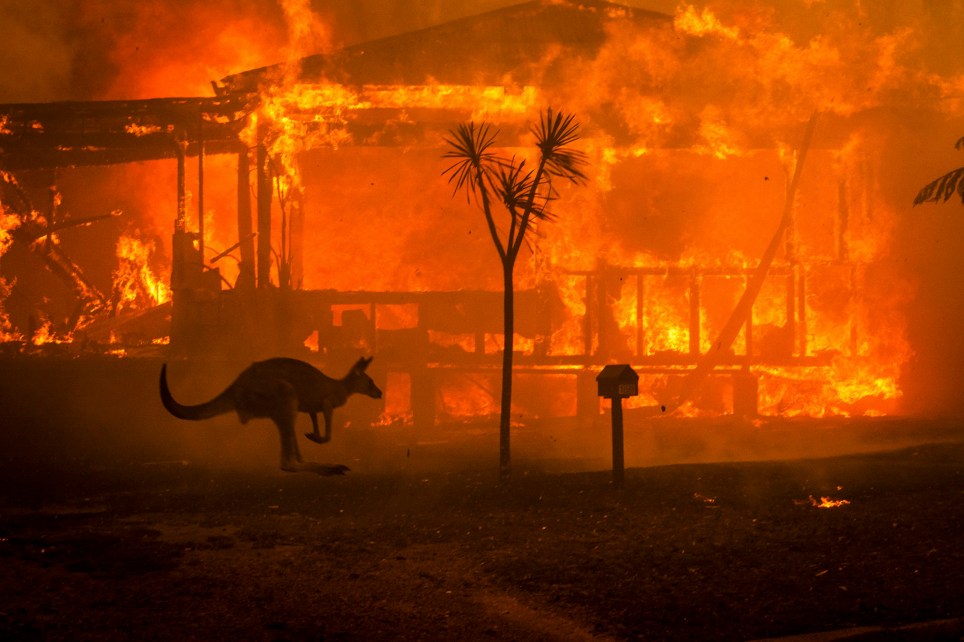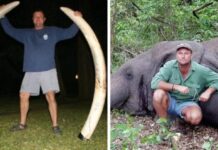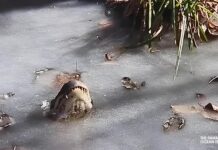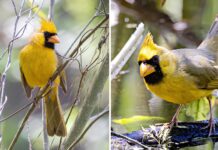More than 1 billion animals are affected as locals battle blazes to rescue wildlife.
As Australia’s ongoing bushfire crisis continues to spread devastation across the island continent, wildlife experts and conservationists are warning of “catastrophic losses” including the elimination of entire species.
The news of entire species being lost comes after the fires burned a third of Kangaroo Island, an island off the country’s southern coast that is often seen as the Australian equivalent to the Galapagos Islands due to its rich biodiversity.
Small marsupials called dunnarts and glossy black cockatoos are among the creatures feared to have been entirely wiped out after the fires transformed much of the island into a “scorched wasteland.”
Ecologists are now rushing to rescue any surviving dunnarts from the devastated island “before they are completely gone,” the Independent reports.
Heidi Groffen, an ecologist and coordinator of the nonprofit Kangaroo Island Land for Wildlife, said that the tiny mouse-sized dunnarts are helpless because of their small size and inability to outrun the fast-moving blaze that laid waste to their habitat.
Only 300 dunnarts lived on the island, but she hopes that some were able to find refuge among rocky crevices and other small spaces.
As well as dunnarts also the primary population base of the tammar wallaby and the KI western grey kangaroo…and all the other amazing native mammals including koalas & possums.The entire west end of KI burnt. Birds like glossy black cockatoos, thick knees (stone curlews) too https://t.co/apEb7wJEbh
— Marilyn Renfree (@MarilynRenfree) January 5, 2020
Groffen said:
“Even if there are survivors, there is no food for them now.
We’re hoping to bring some into captivity before they are completely gone.”
Fellow Kangaroo Island Land for Wildlife ecologist Pat Hodgens explained:
“It’s early days, fires are still burning but we have lost a lot of critical refugia for endangered species which will affect long term viability of these species.
The Kangaroo Island dunnart is our main species of concern and it looks like its entire known [habitat] range has been fried. We are locating unburnt remnant patches of its habitat to see if we can locate it through camera trapping.”
Hodgens noted that now that the fires have subsided, their team would set about using camera traps to detect survivors, while drone mapping would also be used to detect pockets of surviving marsupials.
In addition to the dunnart, a rare flock of glossy black cockatoos is faced with an uncertain future after their habitat was reduced to ashes. While the cockatoos fared better than the dunnarts due to their ability to escape, they may starve to death after losing their source of food on the island.
Conservationists had dedicated 25 years to restoring the glossy black raven from 150, but all of their efforts have gone up in smoke in the span of a week.
There were less than 400 Kangaroo Island glossy black cockatoos alive before the fires started, and almost half of #KangarooIsland has now burned. 25 years of painstaking conservation efforts have just gone up in smoke. #AustraliaBurns, and we are not the only ones paying for it. pic.twitter.com/yno4Vyzm2b
— Nellie Pease (@marsupialtapir) January 5, 2020
Meanwhile, tens of thousands of koalas are feared to have perished after the island burned during what the local mayor called a “most devastating, shattering day” for the island community. Experts say that half of the 50,000-strong local koala population have been eliminated—a tremendous loss especially because the local population of the marsupials is considered the only one free of chlamydia, making the island’s koala’s an “insurance population” for the entire species.
Sam Mitchell, who bought the Kangaroo Island Wildlife Park seven years ago, told AFP:
“We are seeing kangaroos and koalas with their hands burned off—they stand no chance. It’s been quite emotional.
We will do whatever we can to rehabilitate the native wildlife but it’s going to take years to recover.”
Koalas that have suffered burns from the KI bushfire are being dropped off at the Kangaroo Island Wildlife Park. This mum and Joey were picked up by a CFS crew this morning #7NEWS pic.twitter.com/sd9rYhdXeX
— Casey Treloar (@CaseyTreloar) January 4, 2020
Ecologists fear that nearly half a billion million mammals, reptiles and birds are estimated to have been killed since the fires broke out in September, although the current death toll is impossible to calculate.
The massive loss of life is already tipping the balance for entire species of animals and plants on an island continent where 87 percent of wildlife is endemic to the country, meaning it can only be found on Australia.
Professor Chris Dickman of the University of Sydney told 7News that the main challenge will be to restore wildlife populations in the long-term. He said the challenge of rebuilding wildlife populations is a long-term one.
“In the longer term, the rebuilding of populations of many native species is going to be the issue.
A lot will have been undoubtedly very badly affected by these fires.”
By Elias Marat | Creative Commons | TheMindUnleashed.com
Bushfires Australia: how you can donate and help the volunteer firefighters
Donating directly
The NSW Rural Fire Service has multiple options for direct donations. You can donate to the RFS as a whole, or to specific brigades. You can donate through bank transfer, credit card or cheque.
For bank transfers, there is a set bank account (Account Name: NSW Rural Fire Service, BSB: 032-001, Account No: 171051). This account is for the RFS as a whole.
For credit cards, this link will take you to the landing page. You can choose specific brigades from a dropdown box, or donate to the RFS general fund.
And if your brigade is not listed, or if you are unclear, you can contact your local brigade.
In Queensland, Fire and Rescue advise that you can donate both money and items through the website givit.org.au.
The website allows fire-affected communities to list what they specifically need, from water tanks in Yeppoon to school uniforms in Zillmere.
In Victoria, the Country Fire Authority has two bank accounts, one for specific brigades and one for the general fund.
In South Australia, the Country Fire Service accepts donations through the CFS Foundation. You can donate to them here. You can also leave a bequest.
Holding a fundraiser
You can also hold a fundraiser for the fire authorities, or donate to a fundraiser.
However, the NSW RFS advises that you should donate only to verified fundraisers. That’s also true for those setting up fundraisers – get authorisation from the RFS first.
“It’s important that fundraising activities are conducted in a way that is transparent and aligns with the values of the NSW RFS,” they told Guardian Australia.
To hold a fundraising event, you should email them at [email protected].
You’ll also need to provide information on your group, how you will raise funds and what portion will be donated, and the specifics of any item being sold or donated.
“The NSW RFS may place restrictions on the use of its insignia (which includes its name, logo or imagery) for legal reasons, and any use of the insignia must be expressly approved,” a spokesperson said.
“So that the community can be assured that fundraising is legitimate, unless undertaken by NSW RFS brigades members, the service does not support fundraising activities that solicit donations from members of the public beyond members within your registered business, group or association.”
The RFS said it had been flooded with requests to hold fundraisers, so it might take some time to respond.
The Victoria CFA also has a fundraising kit here, with information on how to host one.
Enquiries can be directed to [email protected] or 1800 232 233.
Helping the recovery
What about for areas that no longer have active fires, but have been hard hit? There are a range of ways to help.
You can donate to some of the charities who routinely help with recovery: the Red Cross Relief and Recovery Appeal, St Vincent de Paul or the Salvation Army.
You can also donate, provide items or volunteer at specific evacuation centres – a list can be found here. In general it is always better to give money to the charities that organise assistance, rather than donating in kind, unless there is a specific request for certain items, or if you have checked in advance what may be required.
Each centre may have different needs, so it is important not to arrive unannounced with goods to donate.
On Friday, for example, one evacuation centre for the Green Wattle Creek fire said it did not need donations. Craig Madsen, the general manager of the Mittagong RSL, paid tribute to the work of the charities.
“At the moment, we’re coping quite well,” he told Guardian Australia. “Yesterday was a little hectic but the Red Cross, Salvation Army and disaster assistance people rolled in, got everything organised quite well. The people who came in were looked after.”
Madsen said the RSL had been supplying evacuees with its own food, at its own cost, and waved away donations.
“We haven’t set up any formal donation points here at the club at this stage, we are great for food,” he said. “No real issues for that at this stage.
“The people that came through, we just supplied them at the club.”
Volunteering
Queensland Fire and Rescue also advice that you can volunteer your time to the bushfire effort.
“The best way you can help is to check on the safety of your loved ones, neighbours and friends and help them however you can,” it says.
You can also formally register as a volunteer at Emergency Volunteering. You can also call Volunteering Queensland on 1800 994 100.






